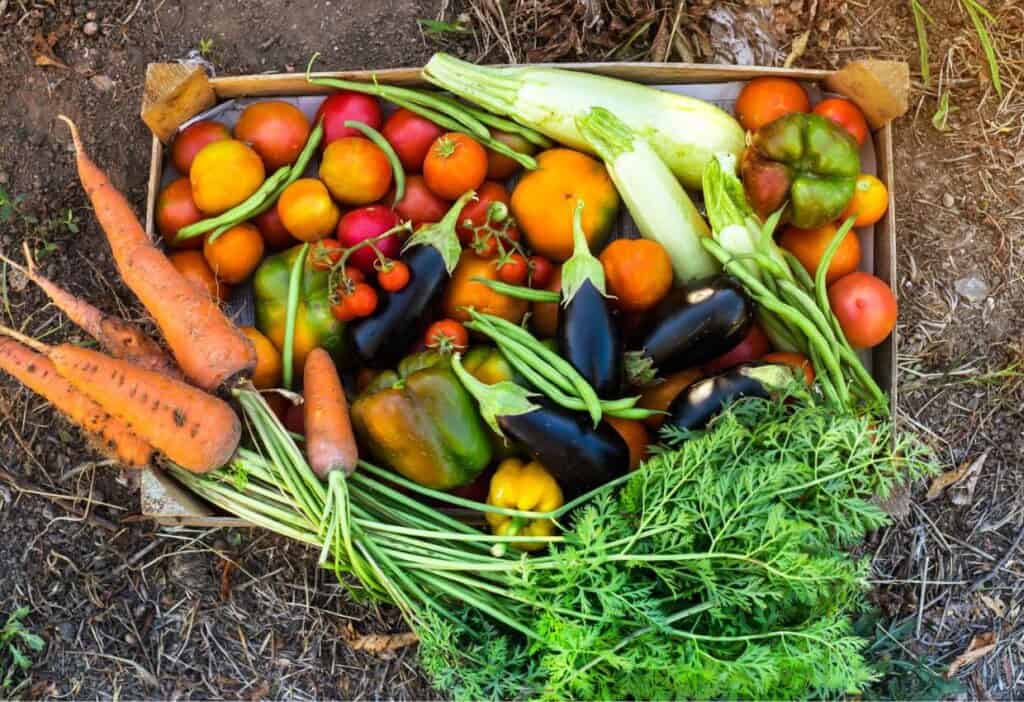Your great-grandparents were on to something; growing budget-friendly groceries is a smart way to save money and enjoy fresh produce right from your home. Recent rapidly rising grocery prices suggest that now might be the time to follow their lead.

Learning how to grow food indoors and out lets you enjoy fresh produce without stretching your budget. But before you start digging, review these tips and tricks for growing the right crops with the best yields.
Start seeds indoors
Start seeds indoors to get a head start on gardening. Make sure you have the proper setup. Invest in trays, good quality soil mix and good lighting.
Seed starting requires durable, lightweight containers with drainage holes and enough depth for root growth. Cardboard egg cartons work well. Keep the soil moist, but beware of overwatering, which can lead to fungal diseases.
Invest in heirloom seeds
According to the USDA Economic Research Service, the price of food prepared at home rose 5% in 2023. This underscores the importance of finding sustainable ways to reduce food costs, including growing food at home.
While growing food at home requires an investment in seeds, some seeds offer better value than others. Cost-effective heirloom seeds allow gardeners to harvest them from the fruits, vegetables or herbs at the end of each season for replanting. This eliminates the need for repeated purchases.
Resilient and flavorful, heirloom seeds support biodiversity and adapt to specific local growing conditions. They may even need less water and fewer pesticides. This saves gardeners more money and contributes to a more sustainable garden.
Choose low-maintenance crops
Certain vegetables and herbs are low maintenance and particularly easy to grow, making them good choices for beginner gardeners. Longtime freelance gardening writer Janet Loughrey of Garden Design suggests new gardeners start small to help avoid feeling overwhelmed.
“Start out with a few easy crops like carrots, radishes and greens such as lettuce, spinach and kale,” she says.” These crops are easy to grow from seed, which is less expensive than buying plant starts.”
Starting with these crops will boost confidence in your gardening skills while reducing grocery bills. Tomatoes, radishes and basil are also excellent choices for new gardeners.
Choose the right crops
Not all crops do well in all areas. Soil conditions, sun, wind and temperature can impact your plants’ growth.
When planning your first garden, choose plants that thrive in local conditions to reduce the effort and resources needed for their care. Get advice from local gardening groups or area agricultural college extension offices.
Next, choose plants best suited to your available space. For example, snap peas, beans and cucumbers grow on trellises in vertical gardens.
Parsley, basil and peppers grow well in pots in warm, sunny corners of patios or balconies. However, don’t plant anything you won’t eat.
“Make a list of edibles you are most likely to eat, whether it’s fresh herbs, tomatoes, peppers or beans,” says Laughrey, adding that doing so will reduce food wastage and be easier on your budget. “Some edible crops such as tomatoes or strawberries can be expensive to buy fresh at the grocery store or farmer’s market, so it will save you money to grow them yourself.”
Learn about companion planting
Companion planting boosts a garden’s health and yield by maximizing the natural relationships between plants. For example, planting basil with tomatoes can help deter pests. Growing marigolds among vegetables can ward off nematodes. Beans, squash and corn grow so well together that Indigenous North Americans called the trio “the three sisters.”
Use a garden planner to experiment with different layouts using companion planting principles based on the size and location of your garden containers, raised beds or pots. After transplanting your seedlings into their final locations, water regularly and apply natural fertilizers to encourage healthy growth.
Try container gardening
Some fruits, vegetables and herbs do better in containers than others. Grow leafy greens, root vegetables and herbs in large planters or pots indoors or out.
Focus on high-yield plants like tomatoes and peppers to maximize your garden’s output, especially if you are working in a small space. Loughry says even people with limited space can grow food crops on a patio or apartment balcony, and herbs and greens can grow indoors in pots on a sunny kitchen window sill.
“Choose a spot that gets 6 to 8 hours of direct sunlight per day,” she advises, explaining there are varieties of vegetables or fruits with a compact habit suitable for container gardening. These include patio tomatoes, bush cucumbers, bush beans, dwarf blueberry bushes and alpine strawberries. “And make sure containers are large enough and have adequate drainage holes.”
Make the most of microgreens
Microgreens offer a nutritious and space-efficient option for indoor gardening. Growing microgreens or sprouts is simple and just requires a shallow tray or mason jar, soil or soil alternative and seeds. The whole process can take as little as 7-14 days. Keeping the soil moist but not soggy to prevent mold is a common challenge with indoor microgreens.
Succession gardening for a steady food supply
Succession gardening ensures a continuous supply of fresh produce. By planting crops every few weeks, gardeners harvest vegetables throughout the season. This approach helps maximize yield and extends the gardening season in backyard gardens and indoors for microgreens and herbs.
Grow your own food and save
Growing your own budget-friendly groceries can help to reduce your food expenses. Start heirloom seeds indoors. Try growing a container garden or even a vertical garden on balconies or patios.
Choose climate-appropriate crops, employ companion and succession planting and experiment with growing microgreens indoors. When you start small and plan carefully, your garden will flourish, providing a steady supply of fresh produce right at your doorstep.
Sarita Harbour is a long-time business and finance writer. She created An Off Grid Life to help people become more self-reliant. Sarita and her family garden off the grid in Canada’s Northwest Territories.